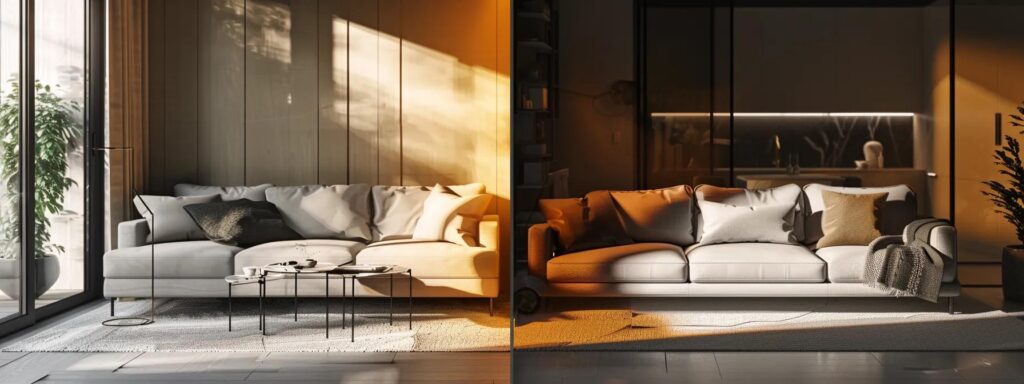Bedding
Key Differences Between Futon Sofa Bed and Traditional Sofa
When deciding between a futon sofa bed and a traditional sofa, many face uncertainty about which option best suits their living space. This article will outline key differences, focusing on structural design, comfort levels, and cost variations. You will gain insights into which option aligns with your needs, especially if you’re seeking stylish and practical furniture on sale now. Addressing concerns about design and functionality, this guide aims to help you make an informed choice for your home while keeping your budget in mind.
Understand the Structural Design of Futon Sofa Beds and Sofas
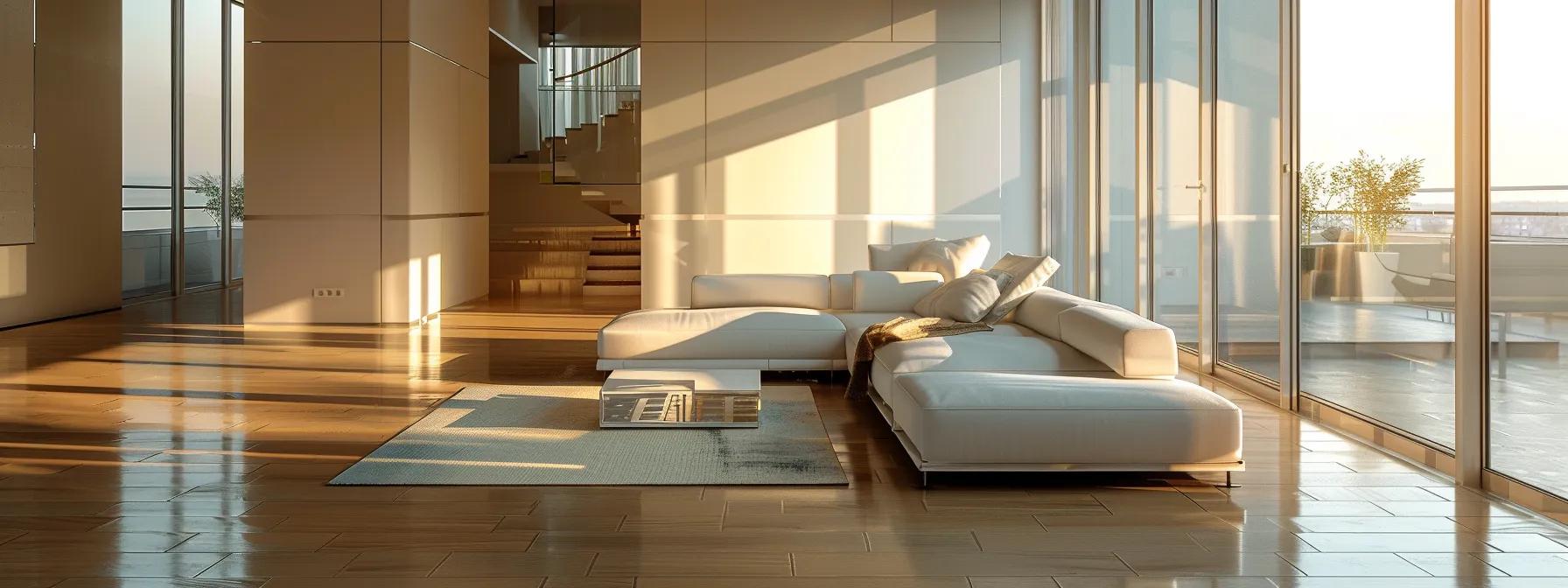
When evaluating futon sofa beds on sale now versus traditional sofas, it’s essential to understand their structural differences. You will examine the frame materials of futon sofa beds, typically crafted from wood or metal. In contrast, traditional sofas often feature more refined construction methods. By comparing bed conversion mechanisms, analyzing design flexibility, and considering weight and stability features, you will gain insights to aid your decision-making process, ensuring the best fit for your living space.
Examine the Frame Materials of Futon Sofa Beds
When you consider futon sofa beds, the frame materials play a significant role in both comfort and durability. Most futons feature frames made from wood or steel, each offering distinct advantages. If you prefer a sturdy option, a steel frame may be ideal as it provides exceptional support and longevity, making it a worthy addition to your interior design.
Wooden frames, on the other hand, often bring a warm, traditional aesthetic that complements various home styles. They can be more visually appealing and may include features like slipcover options for easy maintenance. By choosing a futon with a wooden frame, you can enhance the room‘s atmosphere while balancing practicality with style, meeting your design preferences.
Furthermore, the choice between these materials can influence the weight and stability of the futon. A heavier steel frame tends to offer more stability, especially during bed conversion, while a lighter wooden frame allows for easier mobility. Understanding these differences can guide your selection process and ensure that the futon sofa bed aligns with both your functional needs and aesthetic aspirations.
Identify the Characteristics of Traditional Sofa Frames
When evaluating traditional sofa frames, you will notice they typically emphasize a more intricate construction compared to futon sofa beds. Most traditional sofas incorporate solid wooden frames, providing a timeless aesthetic while ensuring a strong foundation. This construction allows for various designs, such as loveseats and armchairs, which can enhance the overall style of any room.
The importance of comfort is often reflected in the design of traditional sofa frames. These sofas may include features like cushioned backs and high-density foam seats, which allow for a more pleasant seating experience. If you intend to use your sofa for sleep, consider the addition of a quality mattress pad to ensure restful nights, especially for guests.
Stability is also a key characteristic of traditional sofa frames. The solid build typically minimizes movement and ensures that the sofa remains securely anchored in place. Understanding these features enables you to select a sofa that aligns with your needs, whether it’s for relaxing in your living space or providing comfortable seating that converts into a guest bed.
Compare the Mechanisms of Bed Conversion in Futons
When comparing bed conversion mechanisms in futons, you’ll find they offer various options that cater to your needs for flexibility and functionality. Some futons convert with a simple pull-and-flip mechanism, making them easy to set up for sleeping without requiring extensive effort. This convenience becomes essential in your living room, where frequent adjustments might be necessary, especially if you’re accommodating guests.
The design of the armrest can also influence the conversion process. Some futons have removable or folding armrests that allow for a smooth transition between sofa and bed modes, enhancing your overall experience. Selecting a model that incorporates practical armrest functionality can lead to better comfort and support, so you can enjoy downtime without sacrificing style or usability.
It’s important to recognize how these mechanisms can impact the aesthetics of your space as well. Futons with sleek designs can complement a modern décor, such as pottery-themed accents, while providing convenience. Whether you prefer a substantial piece or something lightweight that moves easily over your carpet, understanding these features will help you find a futon that meets your lifestyle and aesthetic preferences:
Analyze the Design Flexibility of Each Option
When you analyze the design flexibility of futon sofa beds, you will notice they often feature a versatile bed frame that adapts seamlessly between seating and sleeping modes. This adaptability is particularly beneficial for those with limited living space, allowing you to maximize functionality without sacrificing style. With options available that include foam cushioning or even an air mattress, you can choose a setup that prioritizes comfort and convenience for both daily use and overnight guests.
In contrast, traditional sofas tend to emphasize design aesthetics over flexibility. While they may offer various styles and materials, such as microfiber upholstery, they are typically less adaptable to dual purposes. If you envision needing a space for occasional sleeping or entertaining, a traditional sofa may not provide the same ease of transformation that a futon can, limiting your overall living space utility.
Ultimately, your choice should reflect your lifestyle and room requirements. If hosting guests regularly is part of your routine, considering a futon sofa bed with a robust design can meet those needs with ease. Alternatively, if you prioritize a permanent seating arrangement with fewer adjustments, a traditional sofa could be the better option while still providing the comfort you desire.
Discuss Weight Considerations in Sofa Selection
When selecting a futon or traditional sofa, the weight of the furniture can significantly influence your decision. A heavier piece, often found in traditional leather or velvet sofas, provides a sense of sturdiness and stability, which can be reassuring for long-term use. However, this added weight can make rearranging your living space more challenging, particularly if you prefer a flexible layout.
In contrast, futon sofa beds usually incorporate lighter frame materials, making them easier to move and reposition as needed. If you anticipate frequent changes to your living area or often accommodate guests, a futon may suit your lifestyle better. The ease of mobility allows for quick transformations between seating and the sleeping configuration, ultimately enhancing your home’s functionality.
It’s essential to keep in mind how the cushion choice also impacts weight considerations. Futons can feature various types of cushions, like memory foam or traditional cotton, which can alter the overall weight while affecting comfort. Balancing comfort and mobility is crucial as you evaluate different options, allowing you to make an informed decision that aligns with both your aesthetic and practical needs:
- Assess the weight of frame materials for stability.
- Consider the ease of moving futons for versatility.
- Evaluate cushion types for comfort without sacrificing mobility.
Assess Stability Features Across Both Sofa Types
Stability is a crucial factor to consider when choosing between a futon sofa bed and a traditional sofa. Futon sofa beds typically feature frames made of wood, such as beech, or metal, which provide various levels of support. While a sturdy metal frame may offer enhanced stability during the transformation from sofa to bed, a wooden frame can provide a reliable structure that contributes to overall durability and aesthetic appeal in your living room or bedroom.
Traditional sofas often prioritize stability through their intricate construction, usually employing solid wood frames for a robust foundation. This design minimizes movement and ensures the sofa remains securely anchored, even under pressure. If you often have guests sleep over and require a consistent bed size, a traditional sofa with a strong frame may provide you with the reassurance you need in terms of stability and comfort for your visitors.
Ultimately, understanding the stability features of both furniture types can guide your purchasing decision. If you need a multifunctional piece that adapts easily from seating to sleeping, consider the construction materials and design. Assess the following aspects as part of your evaluation process:
- Frame material: metal vs wood options
- Movement and support during bed conversion
- Durability in both seating and sleeping arrangements
Now that you have a clear picture of how futon sofa beds are built, it’s time to consider how they feel. Let’s compare the comfort levels of these versatile pieces against traditional sofas.
Explore Comfort Levels of Futon Sofa Bed Versus Traditional Sofa
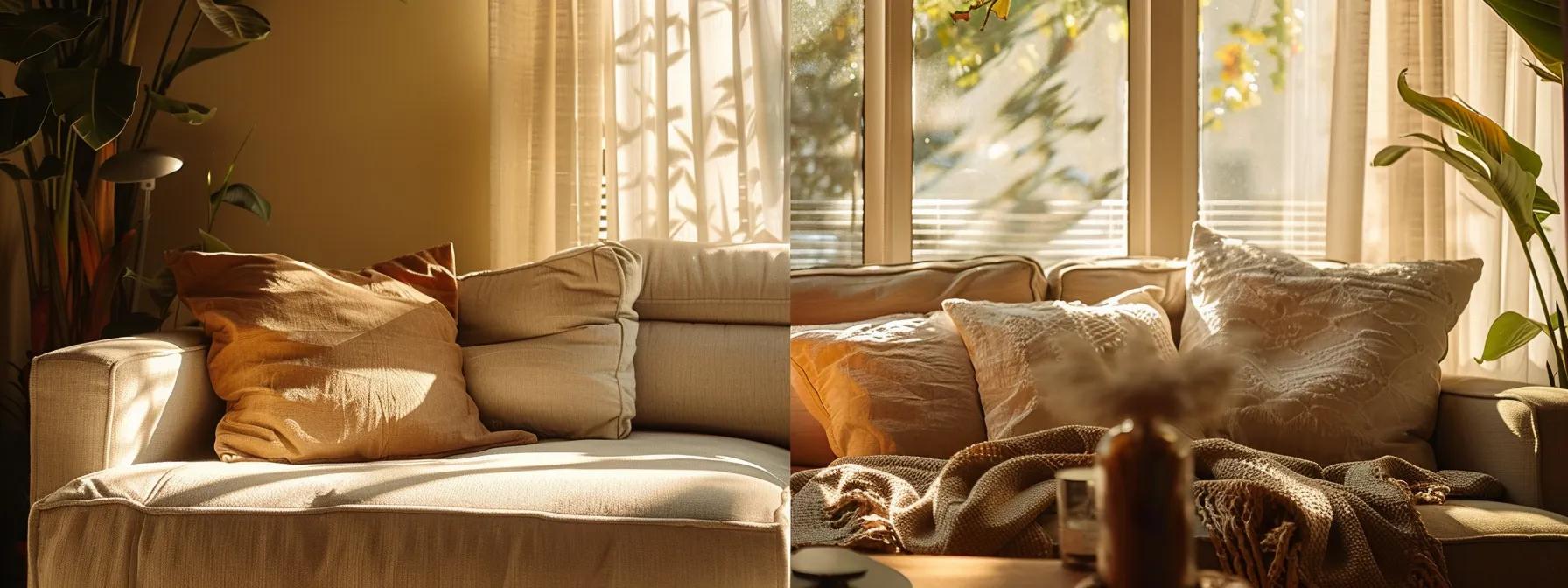
When assessing comfort levels, consider cushioning differences between futon sofa beds and traditional sofas, as these impact daily use. Review user experiences for both sleeping and seating, evaluating support factors driven by mattress quality. Investigate temperature regulation in cushions and compare backrest and armrest comfort design. Analyzing various use cases will guide your choice and ensure satisfaction with your purchase, whether you decide to add to cart a quality daybed or a cozy sofa, balancing price and comfort in your decision.
Determine Cushioning Differences Between Both Styles
When you compare the cushioning of futon sofa beds and traditional sofas, you will notice significant differences affecting overall comfort. Futon sofa beds often use firmer materials, allowing for dual functionality while providing adequate support during both sitting and sleeping. If you prioritize a mattress-like surface for extended use, explore futons that incorporate high-density foam or memory foam options for an improved sleeping experience.
In contrast, traditional sofas typically utilize plush cushioning, which enhances comfort for everyday seating. The design often includes layered cushions made from high-density foam and fiberfill, making them ideal for lounging. If you favor a rich, cozy feel, traditional sofas might better meet your expectations and enhance your overall relaxation experience.
Your choice should consider not only the superficial feel but also temperature regulation and backrest design. Futons may retain heat differently than traditional sofas due to varying materials, so selecting one designed for breathability can affect your comfort levels significantly. Understanding these cushioning differences can help you make an informed decision that aligns with your lifestyle and comfort needs:
Review User Experiences for Sleeping and Seating
User experiences reveal distinct comfort levels when comparing futon sofa beds with traditional sofas, especially concerning sleeping and seating. Many individuals report that while futons are versatile and serve dual purposes, they often lack the plush comfort found in traditional sofas. For seating, traditional sofas are favored for their cushioned support, making them suitable for extended use during gatherings or family activities.
When it comes to sleeping, a significant number of users find futon sofa beds adequate for short-term use. However, for prolonged sleep, the firmness of the mattress can be a concern, with some preferring the plush feel offered by traditional sofas enhanced with quality mattress pads. Feedback highlights the need for balance between functionality and comfort when choosing between these two options.
It’s essential to recognize the varying expectations based on personal preferences and lifestyle needs. If frequent entertaining or accommodating guests is a factor, investing in a traditional sofa may provide the comfort you’re seeking. On the other hand, for those in smaller living spaces needing adaptability, a futon sofa bed could offer a practical solution:
- Futon sofa beds are good for temporary seating and sleeping arrangements.
- Traditional sofas excel in comfort for long-term seating and sleeping with added mattress pads.
- Consider your lifestyle needs when choosing between comfort levels of both options.
Evaluate Support Factors With Mattress Quality
When evaluating support factors related to mattress quality, understanding how different options impact comfort is crucial. Futon sofa beds often feature a thinner mattress that prioritizes versatility over plushness. For those seeking a better sleep experience, you should consider futons with upgraded foam materials, such as memory foam, which can enhance support while providing a more comfortable sleeping surface.
Traditional sofas generally offer a different level of comfort due to their thicker, high-density foam cushions. These materials deliver a softer seating experience, making them ideal for extended use. If you frequently host guests, the added support of a traditional sofa can ensure that everyone remains comfortable, especially during long gatherings or movie nights.
Your choice should reflect your specific needs for flexibility and comfort. If accommodating overnight visitors is common in your home, investing in a futon with a quality mattress can provide a balanced solution that serves both as a sofa and a sleeper. Conversely, if you prefer a permanent seating solution that excels in everyday comfort, a traditional sofa with superior cushion materials might suit your lifestyle better.
Investigate Temperature Regulation in Cushions
Temperature regulation is a significant factor when comparing futon sofa beds and traditional sofas. Futon mattresses often utilize materials that may trap heat, which can lead to discomfort during sleep or extended seating. If you tend to overheat at night, selecting a futon designed with breathable fabric or memory foam that promotes airflow can greatly enhance your comfort level.
In contrast, traditional sofas are generally crafted with thicker cushions that can better accommodate temperature regulation through various fabrics, such as cotton or linen. These materials allow for improved breathability, helping you maintain a comfortable temperature while seated or sleeping. If you prioritize a cozy seating experience without overheating, a traditional sofa may be the more suitable option for your needs.
It’s important to consider personal preferences regarding heat retention in choosing between these two furniture types. If you often have guests staying overnight or frequently use your sofa for long periods, a futon with temperature-regulating properties or a traditional sofa with plush cushioning can significantly impact your overall satisfaction. Evaluate the materials and features of each option to ensure you select one that aligns with your comfort requirements.
Compare Backrest and Armrest Comfort Design
When it comes to backrest design, traditional sofas usually incorporate a more cushioned support system, often featuring plush materials that enhance comfort during prolonged sitting. This thoughtful design caters to those who spend extended hours on their sofa, offering stability and a welcoming feel. In contrast, futon sofa beds may utilize a firmer backrest to accommodate the dual function of seating and sleeping, which some users find less supportive for long-term use.
Armrests also play a significant role in your overall comfort experience. Traditional sofas may feature wider and more padded armrests, providing a cozy place to rest your arms while you relax or entertain. Conversely, many futon options come with narrower or removable armrests, which can create a minimalist aesthetic but may not offer the same level of support and comfort that you might seek for everyday lounging.
Ultimately, your comfort is paramount when choosing between a futon sofa bed and a traditional sofa. Consider how backrest and armrest designs align with your lifestyle needs. If you value plushness and support for extended periods, a traditional sofa might be the more suitable option, while a futon could serve well in environments where space and versatility are priorities. Understanding these differences will guide you to make an informed choice that complements your living space.
Analyze Use Cases for Everyday Comfort
When considering everyday comfort, it’s essential to evaluate how each furniture type fits into your daily routine. Futon sofa beds can serve as practical pieces in multifunctional spaces, making them ideal for homes where you need to maximize seating and sleeping options without additional furniture. This versatility allows you to host guests on short notice while maintaining a cozy living area, fitting seamlessly into your lifestyle.
On the other hand, if you prioritize comfort during long periods of sitting or lounging, a traditional sofa may better meet your needs. These sofas typically feature plush cushioning and supportive structures that allow you to relax comfortably for extended periods, making them suitable for family gatherings, movie nights, or quiet evenings at home. Their design caters to users seeking an inviting and stable seating experience, which is crucial for day-to-day comfort.
Ultimately, understanding your use cases can help you decide which option aligns best with your lifestyle. If you frequently entertain guests or need adaptability in your living space, a futon sofa bed is a worthwhile choice. Conversely, if comfort during leisure time is your primary concern, investing in a traditional sofa may enhance your overall living experience, ensuring you get the most from your furniture selection.
Comfort is key, but style matters too. Let’s take a closer look at how each option enhances your space.
Investigate Style and Aesthetic Appeal of Both Sofa Options
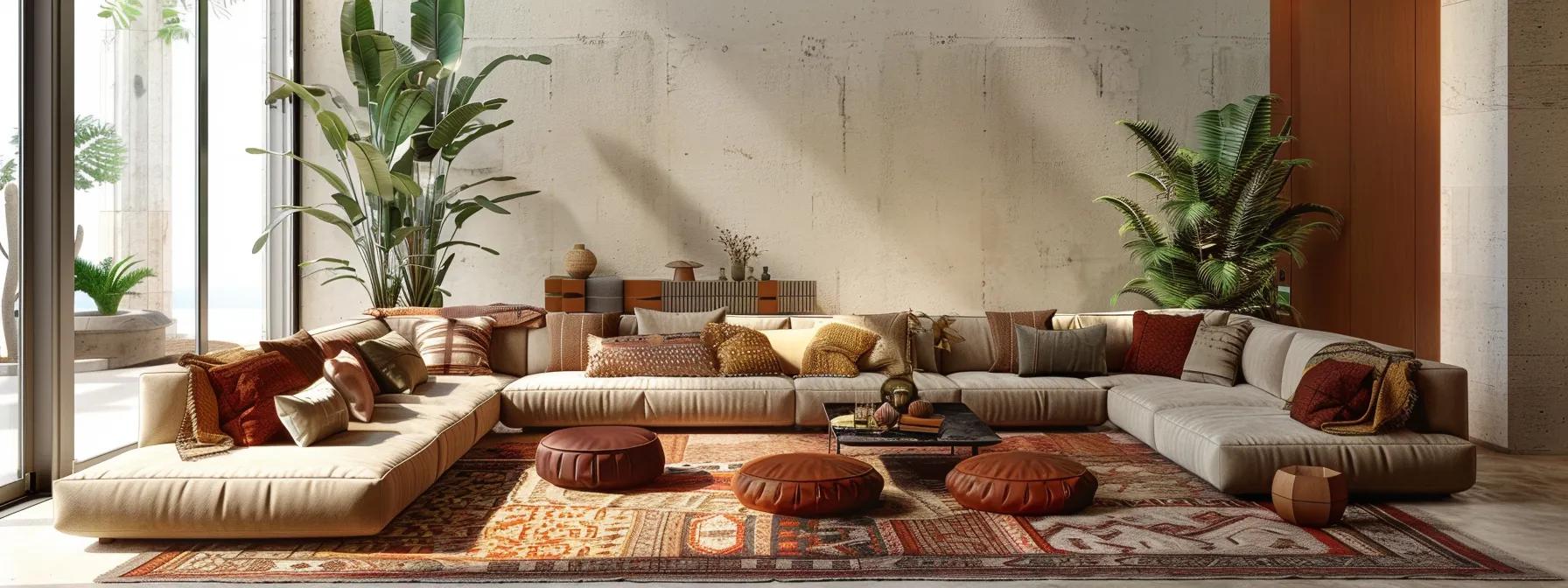
In your exploration of style and aesthetic appeal between futon sofa beds and traditional sofas, you will discover key design trends surrounding futon options, as well as traditional style variations. Assessing fabric choices and color options will help you consider how each piece fits into your space. You’ll also identify space requirements for minimalistic designs, explore customization possibilities for a personal touch, and analyze visual harmony with your room decor.
Discover Design Trends Around Futon Sofa Beds
Futon sofa beds have evolved significantly, responding to changing trends in interior design. Many contemporary models feature sleek lines and a minimalist aesthetic, making them suitable for modern living spaces. Choosing a futon that integrates well with your existing décor ensures that it complements your home and enhances the overall aesthetic appeal.
Another notable trend is the use of vibrant fabrics and prints to elevate the visual impact of futons. From bold colors to unique patterns, these designs cater to a variety of tastes and preferences, allowing you to express your personality through your furnishings. Selecting a futon with an eye-catching fabric not only adds character to your space but also creates a focal point that can refresh your room’s appearance.
The functionality of futon sofa beds extends into their design options, with many models now offering customizable features. Some futons allow you to choose your cushion material, color, and frame style, enabling you to tailor your piece to fit your specific needs and style. This flexibility makes it easier for you to create an inviting atmosphere in your home while addressing your preference for comfort and practicality.
Outline Traditional Sofa Style Variations
Traditional sofas come in a variety of styles that cater to different tastes and interior design themes. You can find options ranging from the classic Chesterfield with its deep button tufting and rolled arms to the sleek and modern lines of Scandinavian designs. Each style not only serves a functional purpose but also contributes to the overall aesthetic of your living space, allowing you to create an inviting atmosphere that reflects your personal taste.
Another variation includes sectional sofas, which offer versatility in seating arrangements. These pieces can adapt to different room layouts, making them ideal for both large and small spaces. By opting for a sectional, you can maximize your seating capacity while maintaining a cohesive design, ensuring functionality aligns with style preferences.
For those who appreciate a more traditional touch, you might consider a vintage-inspired sofa featuring intricate carvings and rich fabrics. These styles often evoke nostalgia and can become statement pieces in your home. Understanding the various traditional sofa styles available will help you select one that not only meets your comfort needs but enhances your living environment as well:
Assess Fabric Choices and Color Options
When selecting a futon sofa bed or traditional sofa, fabric options play a critical role in defining the overall aesthetic of your space. Futon sofa beds often come in more casual fabrics like cotton, polyester blends, or even canvas, which are practical for easy maintenance and versatile in different settings. Consider how these materials complement your existing décor while also aligning with your lifestyle needs, particularly if you plan to use the sofa frequently.
On the other hand, traditional sofas frequently showcase a wider range of luxurious fabric choices, such as velvet, leather, or high-quality woven textiles. These materials not only enhance comfort but also elevate the room’s sophistication. For instance, a leather sofa can add a timeless appeal to your living area, catering to a more refined taste while offering durability and easy cleaning options.
Color options also impact the visual appeal of both types of sofas. Futon sofa beds typically feature bolder colors or playful patterns, making them suitable for modern, eclectic spaces. In comparison, traditional sofas often come in neutral tones or elegant shades, allowing for versatile integration into various design styles. Understanding your preferences will guide you in selecting a sofa that not only fits your aesthetic but also enhances your living environment:
Identify Space Requirements for Minimalistic Design
When considering minimalistic design in your living space, it’s crucial to assess the dimensions and footprint of both futon sofa beds and traditional sofas. Futon sofa beds often have a more compact profile, allowing them to fit comfortably in tighter spaces while providing multifunctionality. This makes them ideal for small apartments or studios where maximizing space is a priority without sacrificing style.
On the other hand, traditional sofas can occupy a larger area, especially sectional models, which may not suit every layout. Their bulkier design can dominate a room, so selecting a size that complements your space is essential. If you prefer a minimalistic aesthetic, look for streamlined sofas that emphasize simplicity and elegance while still providing comfort.
Ultimately, understanding the space requirements of each option can greatly influence your decision. A futon sofa bed can transition with ease between seating and sleeping arrangements, catering to both daily and occasional use. Conversely, if your layout accommodates a traditional sofa, ensure it aligns with minimalistic principles by opting for clean lines and neutral colors that create a cohesive look without overwhelming the space.
Explore Customization Possibilities for Personal Touch
When considering your futon sofa bed or traditional sofa, customization opens a path to reflect your personal style and preferences. Many futon options today allow you to select different fabrics, colors, and patterns, giving you the ability to match your decor seamlessly. For instance, opting for a vibrant print can create a striking focal point in a neutral room, while a classic color can enhance a more traditional aesthetic.
On the other hand, traditional sofas often come with various upholstery choices and may include options for detailed features such as nailhead trim or tufted backs. This level of personalization not only elevates the sofa’s appearance but can also create a sense of uniqueness in your living space. By selecting a traditional design that highlights your taste, you enhance both comfort and visual appeal, making your home truly yours.
Additionally, many modern sofa manufacturers offer the option to combine styles and materials, resulting in a bespoke piece tailored to your needs. You can request specific cushion types or adjust the armrest designs according to your comfort and functionality preferences. This flexibility helps ensure that your final selection not only fits your aesthetic vision but also meets your everyday requirements, harmonizing style and practicality.
Analyze Visual Harmony With Room Decor
When selecting between a futon sofa bed and a traditional sofa, visual harmony with your room décor plays a significant role in achieving a cohesive look. A futon sofa bed typically integrates well into modern, minimalist spaces. Its sleek design and casual fabrics allow it to complement various interior styles without overwhelming the space.
In contrast, traditional sofas come in diverse styles and materials that can enhance the elegance of a room. By opting for classic upholstery choices such as leather or rich fabrics, you can create a timeless appeal that fits well with traditional or formal décor. Consider how the colors and patterns of the upholstery interact with existing elements like rugs and curtains to achieve a unified theme.
Ultimately, your furniture choice should reflect your personal taste while also fitting into the overall design of your space. Whether you choose a futon for its versatility or a traditional sofa for its comfort and style, ensuring visual alignment with your room décor will enhance the atmosphere. Pay attention to these factors when selecting your piece:
- Consider the existing color palette of your room.
- Select fabrics that complement your furnishings.
- Make sure the style of the sofa matches your interior design theme.
The beauty of a sofa lies not just in its looks but in its cost. Let’s break down the price differences between the futon sofa bed and the traditional sofa to see which offers more value for your home.
Examine Cost Differences Between Futon Sofa Bed and Traditional Sofa
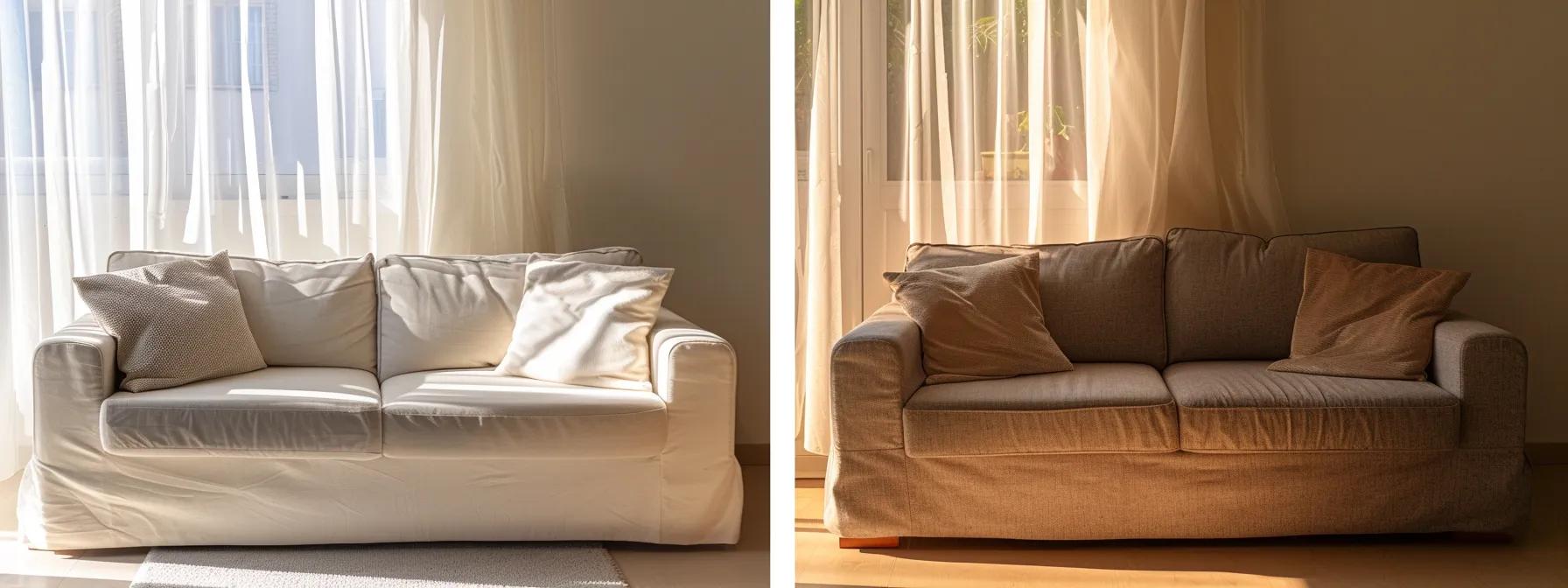
When assessing the cost differences between futon sofa beds and traditional sofas, you will review average price ranges for each type and compare their long-term value and durability. Additionally, you will discuss maintenance and replacement costs, analyze factors affecting your budget decisions, and investigate sales trends in various market segments. You’ll also look into eco-friendly and sustainable options that enhance value while being kind to the environment.
Review Average Price Ranges for Each Type
When reviewing the average price ranges, futon sofa beds typically offer a more budget-friendly option, generally falling between $150 to $600, depending on the materials and features. This affordability makes them an attractive choice if you are working within a limited budget but still require practical furniture that serves multiple purposes.
In contrast, traditional sofas present a wider price spectrum, often ranging from $500 to over $2,000. This higher cost reflects the craftsmanship, materials, and comfort features designed to enhance daily lounging and long-term use. If you are considering a traditional sofa, be mindful of your investment, as opting for quality upholstery and sturdy construction can lead to greater durability and satisfaction.
While the lower initial cost of futon sofa beds may seem appealing, it is essential to evaluate the long-term value of both furniture types. Traditional sofas typically offer enhanced comfort and support, making them more suitable for daily use, whereas futons may require replacement or additional cushioning solutions over time. Understanding these price differences can help you make an informed decision that aligns with your needs and budgetary considerations.
Compare Long-Term Value and Durability
When evaluating the long-term value and durability of futon sofa beds versus traditional sofas, consider how each type fits into your lifestyle and usage patterns. Futon sofa beds are often appealing due to their budget-friendly pricing, but they may not provide the same level of durability as traditional options. If you expect frequent use, traditional sofas typically offer enhanced craftsmanship and sturdier materials that stand the test of time.
Conversely, traditional sofas often incorporate high-quality upholstery and solid frames, leading to an extended lifespan with less frequent need for replacements. The investment in a traditional sofa pays off in the long run, as they tend to maintain their appearance and comfort over years of use. With futons, you might find yourself needing additional cushioning or replacement after a few years, which can offset initial savings.
Ultimately, both options require consideration of maintenance costs and potential replacements. Traditional sofas generally merit a higher initial investment; however, their durability and consistent comfort may justify this choice for the long term. Understanding these factors can help you align your decision with your budget and usage needs:
- Futon sofa beds: budget-friendly but may require future replacements.
- Traditional sofas: higher initial cost but offer long-lasting durability.
- Consider maintenance costs in your overall budget for both options.
Discuss Maintenance and Replacement Costs
When considering maintenance and replacement costs, futon sofa beds generally present a more affordable option up front, but this can change over time. The materials used in futon construction may lead to wear and tear more quickly than those in a traditional sofa, meaning you could face replacement costs sooner than expected. If you often use your futon for both seating and sleeping, you should be prepared for potential early wear.
In contrast, traditional sofas often require a higher initial investment, but they are built with durability in mind. Investing in a high-quality traditional sofa can minimize maintenance and replacement costs over the years, as these pieces are often designed to withstand heavy use without compromising comfort. This means fewer expenses associated with repairs or replacements, providing you with better long-term value.
Understanding the materials and construction of either option can further inform your decision. Futons may require special care with their fabric choices to ensure longevity, while traditional sofas often have easier maintenance routines such as cleaning and upkeep for their upholstery. As you assess your needs, consider how each option fits into your lifestyle and budget to make an informed choice that addresses both immediate comfort and future costs.
Analyze Factors Affecting Budget Decisions
When assessing your budget for a futon sofa bed versus a traditional sofa, it’s essential to consider not only the initial purchase price but also the long-term costs associated with each option. Futon sofa beds generally come at a lower price point, making them an appealing choice for those on a budget. However, you should account for factors like replacement costs or potential upgrades over time, which may add to the overall expenditure.
Another key factor to examine is the durability and maintenance requirements of each type of furniture. Traditional sofas tend to have a longer lifespan due to their robust construction and high-quality materials, which can save you money in the long run. Investing in a traditional sofa might require a larger upfront cost but could lead to fewer expenses associated with repairs or replacements in the future.
Lastly, evaluate how often you plan to use your sofa for seating or sleeping purposes. If you expect frequent use, a traditional sofa could provide better comfort and support, minimizing the need for additional cushioning solutions that might be necessary with a futon. Your decision should also reflect your lifestyle needs to ensure you make the most cost-effective choice:
- Consider initial purchase prices and long-term costs.
- Evaluate durability and maintenance needs for each type.
- Assess your usage frequency to determine the best fit for your lifestyle.
Investigate Sales Trends in Various Market Segments
As you consider purchasing a futon sofa bed or a traditional sofa, understanding current sales trends can help you make an informed decision. The futon market has seen a rise in demand due to its affordability and multifunctionality, particularly among young professionals and college students seeking budget-friendly options. Conversely, traditional sofas continue to maintain popularity among families and homeowners, driven by a focus on comfort and design that enhances home aesthetics.
In several market segments, the variability in pricing reflects broader trends in consumer preferences. While futon sofa beds appeal to those looking for economical and space-saving solutions, the traditional sofa market represents a commitment to timeless quality and durability. High-quality traditional sofas often come with a higher price tag, but buyers perceive these as worthwhile investments for long-term comfort and style, especially in homes where seating is heavily utilized.
To further navigate your buying experience, you can look into sales trends within specific retail channels. Online marketplaces have become increasingly popular for both futon sofa beds and traditional sofas, allowing consumers to compare prices and options easily. Understanding these trends can guide you in making a purchase that fits your budget while meeting your lifestyle needs:
Look Into Eco-Friendly and Sustainable Options
When considering eco-friendly options for your furniture, both futon sofa beds and traditional sofas can offer sustainable materials that align with your values. Many manufacturers now use renewable resources, such as sustainably sourced wood or recycled metals, in their constructions. By opting for eco-conscious pieces, you contribute positively to the environment while enhancing your living space.
In addition to materials, the production processes of futon sofa beds are often designed with sustainability in mind. For example, futons may utilize low-impact manufacturing techniques, which reduce waste and energy consumption. Choosing products made with such practices not only helps in minimizing your carbon footprint but can also lead to a healthier home environment due to fewer harmful chemicals involved in the production.
Moreover, both types of sofas can come with certifications that indicate their eco-friendly credentials, like Greenguard or FSC certification, which assures you of responsible sourcing and low emissions. Understanding these labels helps you make informed purchasing decisions that align with your lifestyle and principles. Ultimately, selecting sustainable furniture not only benefits the planet but often offers long-lasting quality, making your investment worthwhile.
The cost of a futon sofa bed can surprise you, but it opens the door to more than just savings. Let’s look at how these choices hold up in daily life, where practicality meets comfort.
Analyze Practicality and Functionality in Daily Use
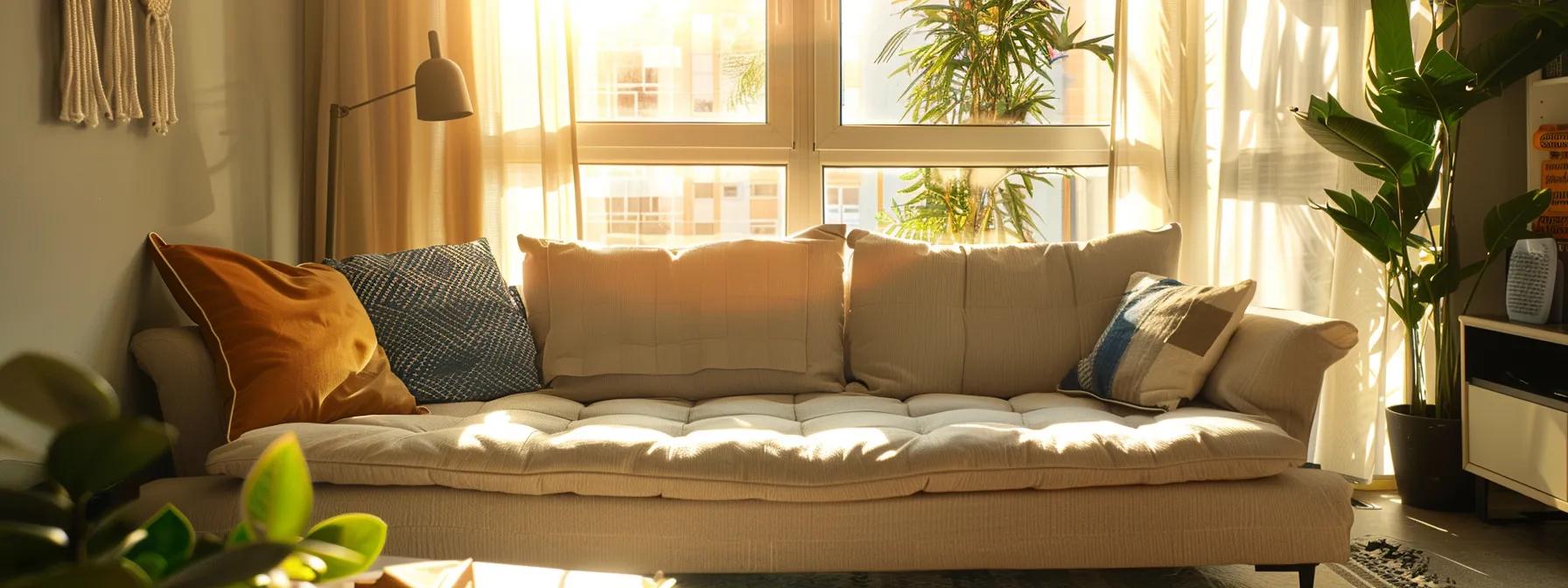
When examining practicality and functionality, you’ll discover that futon sofa beds offer valuable space-saving features, perfect for compact living areas. In contrast, traditional sofas provide versatility in room layouts, enhancing your design options. Consider ease of use and maintenance preferences, as well as the storage capabilities unique to each type. Evaluating user-friendliness and how each option suits different lifestyle needs will guide your decision-making process.
Explore Space-Saving Features of Futon Sofa Beds
Futon sofa beds are designed with space-saving features that make them ideal for smaller living environments. Their ability to convert effortlessly from a couch to a bed allows you to maximize functionality without the need for additional furniture. This dual-purpose design is particularly beneficial if you frequently host guests or need a flexible seating option in tighter spaces.
In addition to their convertible functionality, futon sofa beds typically have a more compact footprint compared to traditional sofas. This means you can position them in various layouts to optimize your room‘s layout without compromising on style or comfort. Many modern futon designs offer sleek lines and minimalist aesthetics that enhance your interior while being practical for everyday use.
Utilizing a futon sofa bed allows you to enjoy both seating and sleeping arrangements without sacrificing precious floor space:
- Versatile design suits multifunctional rooms.
- Compact size offers flexible positioning.
- Easy conversion simplifies accommodating guests.
Identify Versatility in Room Layouts With Sofas
When arranging your living space, the versatility of your sofa choice plays a significant role in how effectively you can optimize room layouts. Futon sofa beds excel in this area, allowing you to switch effortlessly between a comfortable seating area and a sleeping space for guests. By choosing a futon, you create a multifunctional environment that can adapt to your needs, making it an ideal solution for smaller rooms where every inch counts.
In contrast, traditional sofas offer their own flexibility in room design but often require more investment in space. If you have a larger area, a sectional sofa can redefine your layout by providing ample seating while still allowing for open floor space. This adaptability means that you can welcome family and friends with ease without sacrificing comfort or style.
Ultimately, your choice of sofa should align with how you envision using your space. Whether you opt for a futon sofa bed for compact versatility or a traditional sofa for expansive layouts, understanding their functional differences empowers you to make informed decisions that enhance your living environment. Your furniture selection should cater not only to aesthetics but also to your daily comfort and practical needs.
Discuss Ease of Use and Maintenance Preferences
When considering ease of use, futon sofa beds typically offer a straightforward conversion process from sofa to bed. With mechanisms like pull-and-flip designs, you find that accommodating guests becomes a simple task, enhancing your living space’s functionality without added effort. This user-friendly approach is particularly beneficial in smaller homes where quick adjustments are often necessary.
On the other hand, traditional sofas can be less versatile, primarily designed for seating. While they provide excellent comfort for lounging, converting them into a sleeping space usually involves additional components, such as mattress pads or fold-out mechanisms. This may require more time and effort, making them less practical for immediate use when hosting unexpected visitors.
Maintenance preferences also differ significantly between the two options. Futon sofa beds often feature removable covers, making it easier to clean and care for your furniture. Traditional sofas, while more luxurious, can require more intricate care depending on the materials used, such as leather or high-end fabrics, which often need specialized cleaning methods to preserve their appearance and longevity. Understanding these aspects allows you to select a piece that aligns with your lifestyle and maintenance preferences.
Compare Storage Options Available With Each Type
When you evaluate storage options between futon sofa beds and traditional sofas, you’ll find that futon sofa beds often incorporate hidden compartments or space-saving designs. These features allow you to store bedding, pillows, or other items directly within the futon structure, maximizing utility in smaller spaces. This practical approach makes futon sofa beds ideal choices for compact living environments where storage is a crucial consideration.
In contrast, traditional sofas typically do not offer built-in storage solutions. While they may emphasize comfort and aesthetic appeal, their design often lacks the versatility of a futon when it comes to accommodating extra items. If you prefer a neat living space, consider how this aspect might require additional storage furniture or creative organizing strategies to keep your area clutter-free.
Examine User Friendliness in Versatile Furniture
When it comes to user-friendliness, futon sofa beds are designed for easy adjustments and quick transformation. Their straightforward pull-and-flip mechanisms allow you to switch from a couch to a bed with minimal effort, making them ideal for accommodating unexpected guests. This versatility appeals to those who value functionality in a limited living space.
Traditional sofas, while often more comfortable for extended seating, may require additional components or time to set up for sleeping. If you plan to use your sofa for both lounging and overnight guests, consider the convenience of having a futon sofa bed that easily adapts to your needs without the hassle. This factor can significantly influence your daily routine and your ability to entertain.
Moreover, the maintenance of each type can affect user satisfaction. Futon sofa beds typically feature removable covers, making it easier for you to clean and care for your furniture compared to many traditional sofas, which might demand more detailed upkeep. This ease of use combined with their multifunctionality can enhance your living experience, allowing you to focus on what truly matters—enjoying your home:
Assess Suitability for Different Lifestyle Needs
Assessing the suitability of a futon sofa bed versus a traditional sofa requires consideration of your specific lifestyle needs and daily routines. If you frequently entertain guests or need versatile seating for limited space, a futon sofa bed can serve as a practical solution. The ability to convert between a sofa and a bed effortlessly allows you to accommodate various situations without the need for additional furniture.
For households where comfort during long periods is essential, a traditional sofa may be the better choice. Traditional sofas often provide superior cushioning and support, making them more suitable for families or individuals who spend considerable time lounging on their furniture. If you prioritize a cozy environment for relaxation after a busy day, investing in a quality traditional sofa may enhance your everyday comfort.
Understanding your unique living situation can guide your final decision between these two options. If you live in a compact apartment or regularly host overnight visitors, the space-saving features and flexibility of futon sofa beds can be advantageous. In contrast, if your home features larger areas intended for relaxation and entertaining, a traditional sofa with robust design might fulfill those needs more effectively:
- Futon sofa beds are ideal for small spaces and flexible usage.
- Traditional sofas offer greater comfort for prolonged sitting.
- Your decision should reflect whether you need versatility or comfort.
A futon sofa bed offers more than comfort; it adapts to the rhythm of your life. Next, let’s examine how its portability stacks up against traditional sofas, revealing its true advantage in every setting.
Review Portability of Futon Sofa Beds Compared to Traditional Sofas
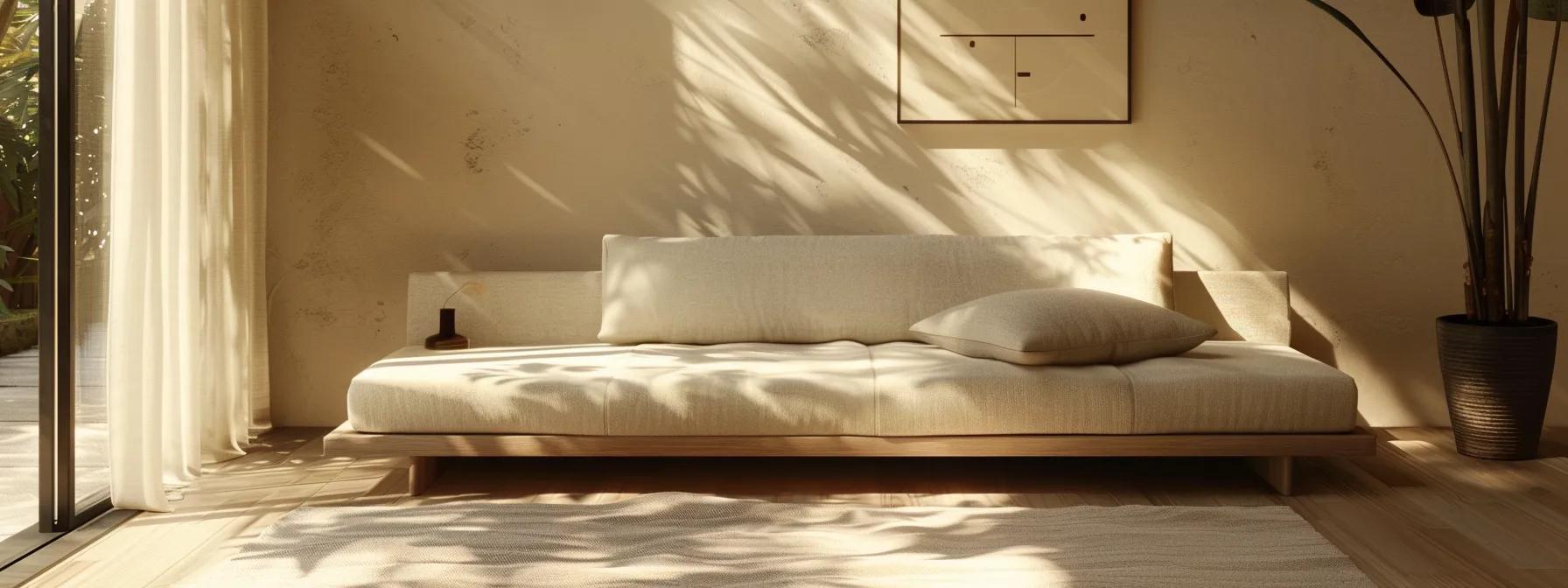
When assessing the portability of futon sofa beds compared to traditional sofas, you’ll investigate several key factors. You’ll consider weight and movement, as lighter futons often allow for easier relocation. Assembly requirements can vary substantially, impacting convenience in small apartment living. Additionally, examining transportation needs during relocations, along with evaluating components for disassembly and storage, is essential. Understand best practices for moving furniture to ensure a smooth transition.
Investigate Weight and Movement Considerations
When considering furniture for your living space, weight and movement are essential factors to evaluate. Futon sofa beds are typically lighter compared to traditional sofas, making them easier to move and reposition. If you frequently rearrange your furniture or live in a compact apartment, this portability can significantly enhance your living experience.
With futon sofa beds, the lightweight frame allows for quick transformations between seating and sleeping configurations, ensuring you can accommodate guests efficiently. This feature can be invaluable in settings where space is limited, as it provides you with the flexibility to adapt your furniture layout as needed. Understanding these aspects can help you choose a piece that complements your lifestyle and space requirements.
In contrast, traditional sofas are often heavier due to their solid construction and additional cushioning. This added weight may lend stability but can make moving them a challenging task, especially when you want to clean or rearrange your space. Being aware of this difference can guide your decision, particularly if you value ease of use and adaptability in your furniture choices.
Compare Assembly Requirements for Each Option
When considering assembly requirements, futon sofa beds generally offer a more straightforward experience. Most models come with minimal components, allowing you to set them up quickly without needing extensive tools or professional help. This ease of assembly is particularly beneficial if you are a first-time buyer or live in a compact space where convenience is essential.
In contrast, traditional sofas may involve more complex assembly processes due to their heavier construction and multiple parts. You often need to connect various components, such as the frame and legs, which can take more time and effort. If you prefer hassle-free setups, you should weigh this factor carefully, as traditional options might not be as user-friendly in terms of initial assembly.
Highlight Convenience for Small Apartment Living
In small apartment living, maximizing the available space is often essential. Futon sofa beds offer significant convenience by serving dual purposes, allowing you to have both a comfortable seating area and a sleeping space for guests. This adaptability is particularly beneficial when hosting friends or family, as a futon can easily transform from a sofa to a bed within moments, accommodating unexpected visitors without the need for additional furniture.
The lightweight design of futon sofa beds further enhances their suitability for compact living spaces. You can effortlessly move them around, allowing for quick rearrangements to suit your needs. This portability makes it easier to clean or adjust your layout as necessary, ensuring that your apartment remains organized and functional.
Additionally, futon sofa beds often feature built-in storage options, offering a practical solution for small apartments where every inch counts. These compartments allow you to store bedding and pillows neatly, helping to keep your living area clutter-free. By choosing a futon, you not only gain flexibility but also simplify your maintenance routine, making it an ideal choice for urban dwellers seeking both comfort and convenience.
Examine Transportation Needs for Relocations
When considering the transportation needs for relocations, futon sofa beds offer distinct advantages due to their lightweight design. Their portability makes it easier for you to move them from one location to another without requiring additional help or specialized equipment, minimizing potential stress during your move. This feature is particularly beneficial for urban dwellers or those frequently changing residences, as you can simplify the process of settling into a new space.
Traditional sofas, on the other hand, can pose challenges during transportation due to their bulkier and heavier construction. You may need extra assistance to lift and maneuver these pieces, which can lead to unforeseen complications if you’re not adequately prepared. If you’re relocating often, this added complexity can become a significant factor in your decision-making process regarding which type of furniture will best suit your lifestyle.
Additionally, consider the logistical implications of transporting furniture. Futon sofa beds often require less space and can fit into smaller vehicles, allowing for increased flexibility when arranging your move. By choosing a futon sofa bed, you enhance your ability to navigate tight stairwells and narrow hallways, ensuring you successfully transition your living space with minimal disruption to your routine.
Evaluate Components for Disassembly and Storage
When considering the components for disassembly and storage of futon sofa beds versus traditional sofas, one of the primary advantages of futons lies in their simple design. Many futon sofa beds are constructed with fewer parts, making them easier to take apart and reposition as needed. This lightweight assembly allows you to quickly adapt your living space, particularly in tight areas, where ease of mobility is crucial for maintaining an organized environment.
In contrast, traditional sofas often consist of more intricate components, including a heavier frame and supportive features. Assembling and disassembling these pieces can require more effort, depending on the sofa’s construction and size. If you frequently relocate or rearrange your furniture, these extra steps can become a hassle, making futons more appealing for individuals preferring straightforward setups.
Understanding how each type handles storage and disassembly can profoundly impact your decision-making process. Futon sofa beds typically provide built-in storage options for cushions and bedding, which eliminates clutter in your living area. Assessing these features can guide you to a more practical choice, ensuring that the furniture you select meets your lifestyle needs efficiently:
Identify Best Practices for Moving Furniture
When you decide to move furniture, it’s crucial to prepare adequately to ensure a smooth process. Begin by measuring the dimensions of your futon sofa bed or traditional sofa and the doorways, hallways, and staircases through which you will pass. Ensuring that your furniture can fit through these spaces without damage can save you significant time and effort during the move.
Next, consider enlisting help from friends or professional movers. Lifting and maneuvering heavy furniture, particularly traditional sofas, can be challenging alone. Collaborating with others allows you to share the load and navigate tricky angles more effectively, especially when moving bulky pieces like futon sofa beds that require a bit of finesse during assembly or conversion.
Lastly, utilize the right moving equipment to protect both your furniture and your living space. Using moving blankets, straps, or dollies can help prevent damage during transportation and provide stability as you adjust the piece in its new location. By taking these precautions, you ensure a successful move for both futon sofa beds and traditional sofas, enhancing your overall experience and satisfaction in your living environment.








